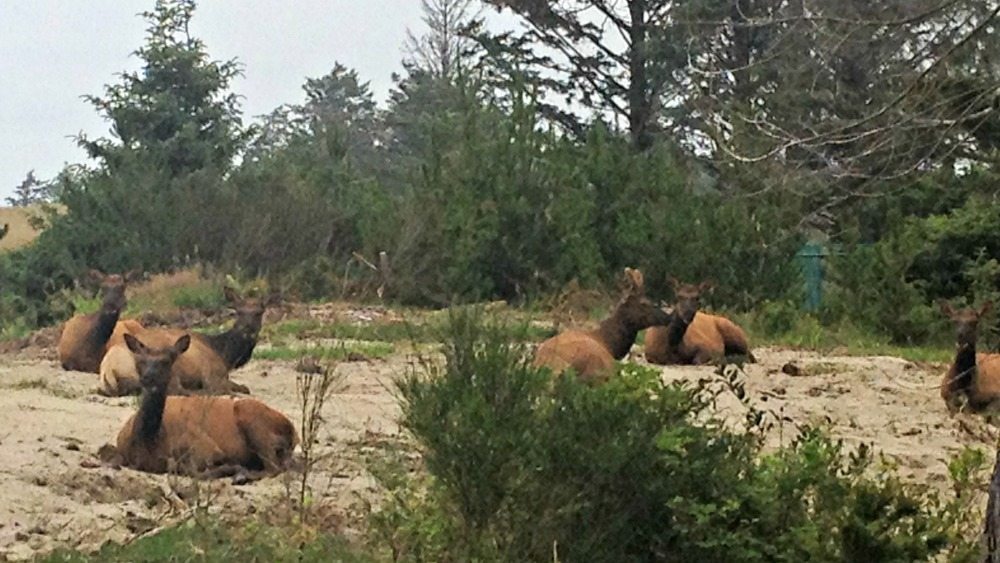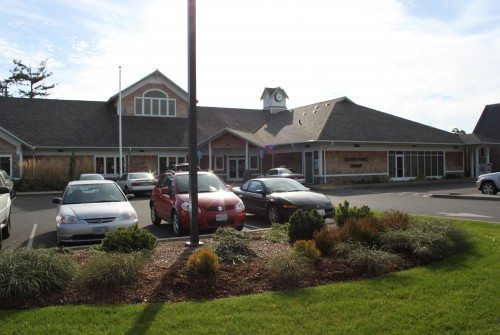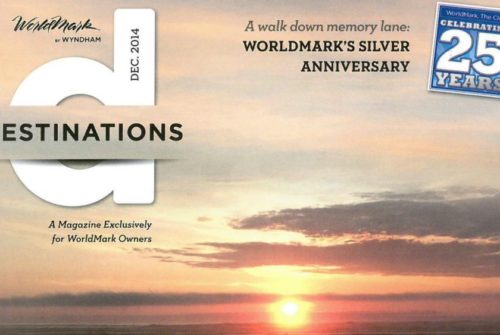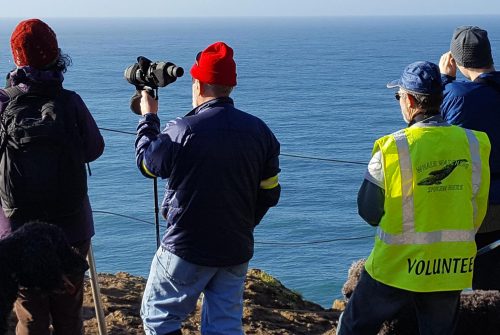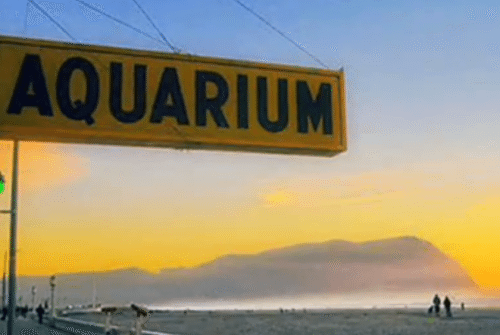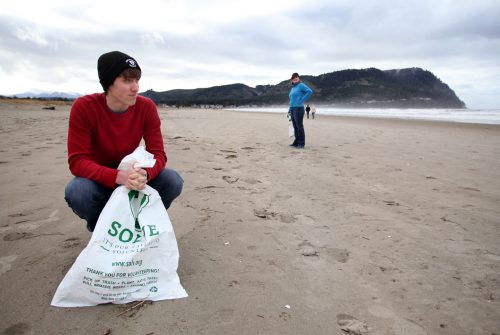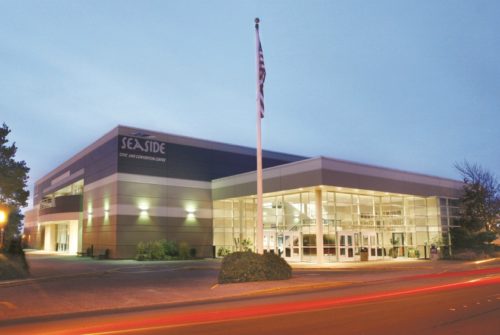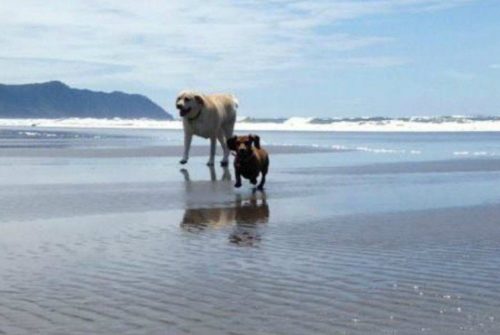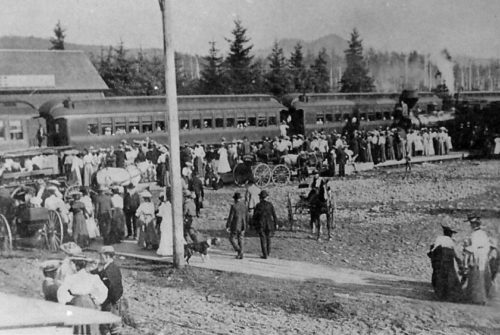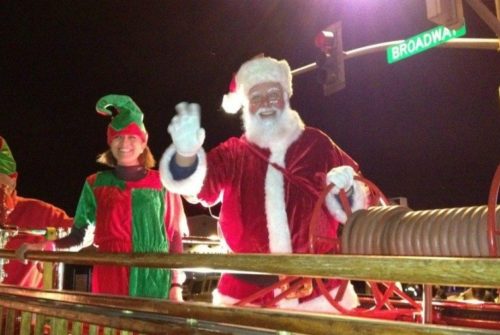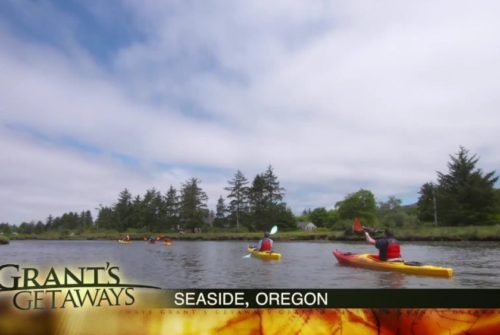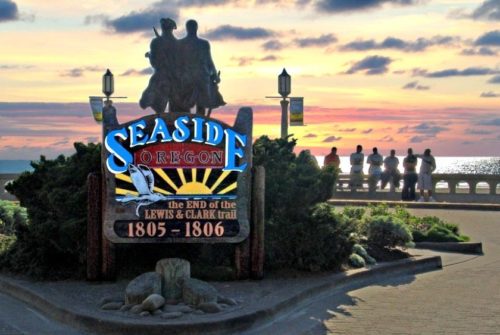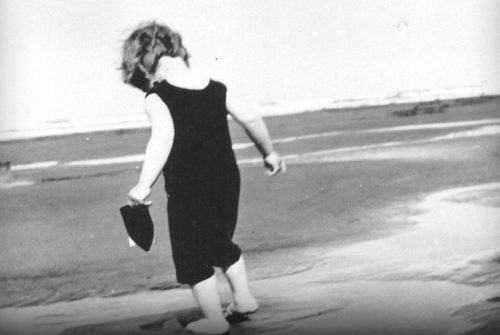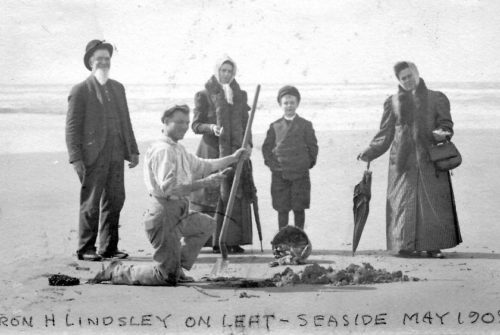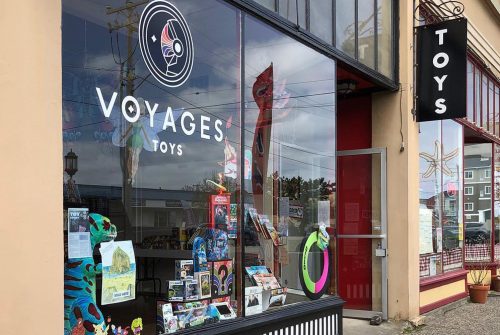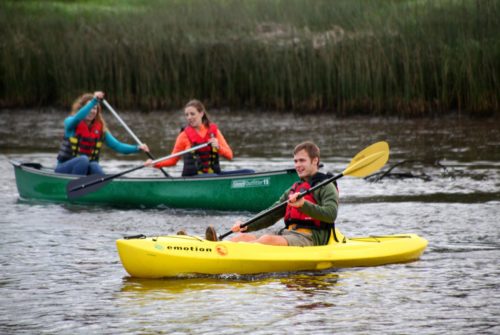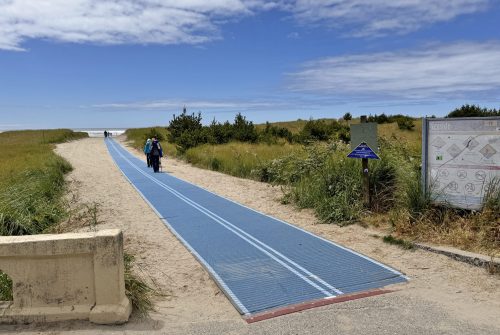I was driving into Seaside, along Highway 101 South, and had just passed the Circle Creek Campsite on the left, when I noticed several cars parked off the side of the road. They were people standing around with cameras, and pointing into the field, and so I decided to pull over to see what was happening. As I got out of the car, I noticed there were animals in the field. I thought they were cows at first, but as I looked again I saw that it was Seaside’s own herd of elk.
I decided to do a little investigating into this herd of elk. Having lived on the North Oregon Coast for a while, I’ve seen elk up at Tillamook Head, Ecola State Park, and all along Highway 101, but this herd seems to consistently show up here at Circle Creek. I wanted to know more about these majestic animals that we locals take for granted, and visitors can’t seem to photograph enough.
I called the Oregon Department of Fish and Wildlife, and found out these are Roosevelt Elk, and that this herd is part of the Saddle Mountain Unit. There are around 7,500 elk in the Saddle Mountain Unit. Troy, from the ODFW, told me that just this morning they had flown over in a helicopter for their annual classification of the herd. He said that they saw four or five bulls in the group this morning.
He said that this herd uses the land as part of their habitat needs; that they forage for food, waters, etc. Elk usually only go where they can find their habitat needs, but Troy said that although it’s rare, the elk have been known to wander down to the beach, and have been photographed in the surf. He also told me that this herd of elk is genetically related to the same elk that were here when Lewis and Clark came to the Oregon Coast.
The land by Circle Creek, and the Tillamook Head State Park are both protected areas for the herd. The land by Circle Creek, where the elk graze, is former farmland that now belongs to the North Coast Land Conservancy. I called the NCLC, and talked to Katie, who told me about the Circle Creek area. It is 364 acres and the NCLC preserves the area, and the wildlife within (including elk, birds, salmon, etc). The elk are an important part of the ecosystem, and use that area as part of their winter habitat refuge, but it’s only one of their many habitats.
The NCLC is working to create an enhanced habitat, including returning the historical conditions (which was a natural coastal floodplain). They are planting native trees and shrubs, but it will never be a closed forest area. That way, visitors, locals, and I will be able to see the elk for many, many years to come!
